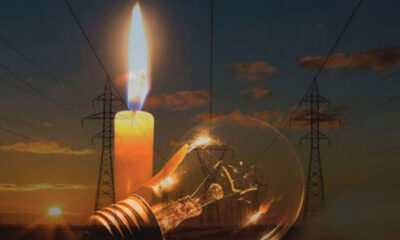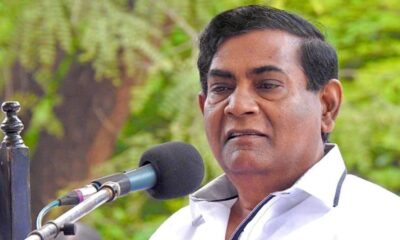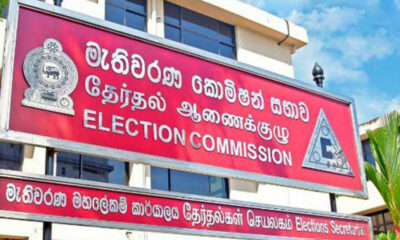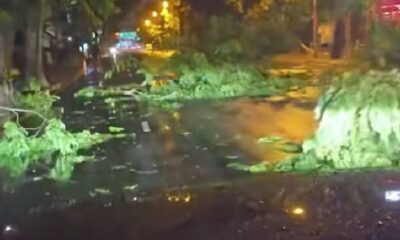FEATURES
This electricity tariff hike is not legal
Published
2 years agoon
By
editor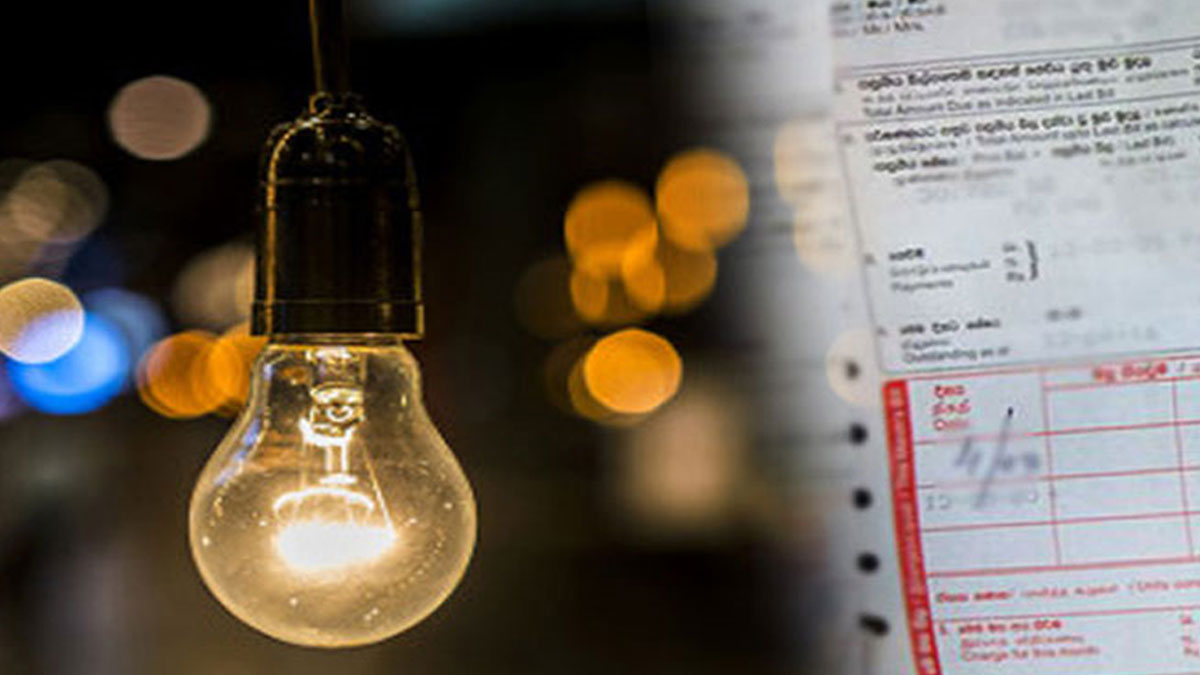
The Public Utilities Commission of Sri Lanka (PUCSL) has for the third time in 14 months approved an electricity tariff hike by 18%, effective from 20 October. Whatever calculations and reasons the CEB and the PUCSL provide in justifying this third tariff hike, are only in relation to cost which means CEB expenses, never given in detail. For the consumer, my rough calculations show a cumulative increase in tariff of around 300% since August 2022, with one increase topping the other. The first in 2022 August being 75%, the next in 2023 February being 65% on the tariff increased by 75% and now 18% over the previous increase. PUCSL would justify this 18% increase by saying they did not allow the 22% increase the CEB wanted.
My question is, “how legal are these increases that only consider unexplained CEB costs and not the consumer?” Does the Act that established the PUCSL with a mandate to decide tariff revisions requested by State owned public utility agencies, allow the PUCSL to decide on tariff revisions with the consumer wholly ignored? The PUCSL Act No. 35 of 2002 (https://www.pucsl.gov.lk/wp-content/uploads/2017/12/E-35-2002_E.pdf) in detailing “Objectives, Powers and Functions” of the Commission in Part IV lays down in Section 14(2) the Commission shall act in a manner as best calculated to (a) protect the interests of all consumers (c) promote efficiency in both the operations of and capital investment in public utilities (d) promote efficient allocation of resources and also (e) promote safety and service quality.
Let’s look into the provision of “protecting consumer interests”. Has the PUCSL protected, leave alone “promote the interest of all consumers” in deciding tariff increases during the past 14 months? What in fact are the fundamental interests of the consumer? First and foremost, it is affordability in the context of “living cost”. Next is the impact increases would have on his/her and family living costs. Also most importantly, its impact on his/her livelihood; self-employment or otherwise.
None of those aspects that affect the consumer has ever been considered. Massive tariff increases have been allowed without any attention paid at least to the UNESCO Report on Sri Lanka – 2022 that highlights “More than 5.7 million people, including 2.3 million children, require humanitarian assistance. Sri Lanka is among the top ten countries with the highest number of malnourished children and the numbers are expected to rise further.” Numbers are increasing with reported factory closures, throwing out thousands of employees from work.
According to the Census and Statistics Dept. “Labour Force Survey Quarterly Report – 2023 Q1” during the first quarter of this year 252,480 had lost employment compared to employment in the 2022 First Quarter. Top apparel manufacturers complain of excessive cost of production due to electricity tariff increases that make securing new orders difficult with other countries like Bangladesh and Vietnam offering cheaper rates.
The PUCSL cannot be ignorant of these socio economic issues the people are burdened with, to stick to CEB quoted expenditure estimates only. Since August 2022 three successive tariff increases approved on CEB requests to cover their costs, prove the PUCSL is violating its legally mandated social responsibility of “protecting the interests of all consumers”. If they did have any concerns for millions of people struggling to make ends meet in the worst economic crisis this country is crawling through and if they abided by their mandate to protect the interests of all consumers, they should have first and seriously looked into possibilities of “reducing CEB costs” instead of further increasing tariff for the third time.
Squaring off cost and income is not about merely increasing tariff, but is also about improving efficiency of service delivery and reducing cost. In all three occasions within the past 14 months when electricity tariff was increased, there was no attention and interest paid to improving efficiency and reducing CEB costs that includes incalculable waste, mega corruption, and callous inefficiency on the part of the CEB management the PUCSL has to take total responsibility for.
How can the PUCSL ever speak of “promoting efficiency” with trillions of rupees of uncollected consumer bills of politicians and businessmen left completely ignored? How can the PUCSL account for maintaining thousands as excess staff even the Minister of Power and Energy accepts there is, allow massive monthly overtime payments despite maintaining excess staff and also ignore outsourcing CEB services to private companies for undeclared fees and still approve tariff increases? That again violates their mandate to (c) promote efficiency in both the operations of and capital investment in public utilities and (d) promote efficient allocation of resources under Section 14(2) of the Act.
All these conscious violations of their mandate as provided for in the Act are being covered with requests for “Stakeholder consultation on the proposed 03rd electricity tariff revision 2023″. Oral submissions accordingly were fixed for 18 October 2023. The advertisement said from 4 to 18 October, written submissions would be accepted too. No one knows how many have submitted written proposals and suggestions and what they are.
I am still not told what they did with my proposals sent in on 4 October, except for the acknowledgement received. What I am expected to understand from their non-commitment on my requests is, the PUCSL in no way is willing to provide details of the CEB expenditure that would expose mega corruption, waste, inefficiency and undue privileges enjoyed by the top management and their wheeler dealers that are billed to the consumer as costs to be covered by tariff increases.
Thus, the decision to increase tariff by 18% was taken by PUCSL the day after oral presentations were accepted on 18 October. That again was a farce of a “stakeholder consultation” with those who were registered for oral presentation provided 10 minutes with no comments, queries and discussions allowed nor the PUCSL high command showing any interest in them. This was organised to show they were adhering to Section 17(b) that says the PUCSL shall “consult, to the extent the Commission considers appropriate, any person or group who or which may be affected, or likely to be affected, by the decisions of the Commission.”
In Sri Lanka no public consultation is practically possible without necessary documents provided in Sinhala and Tamil languages. With PUCSL, “relevant documents” for stakeholder consultations were made available “only” in English language, posted in their official website violating the Constitution that decides Sinhala and Tamil languages as the two official languages any State agency should communicate with. Thus, in no way was this a “public consultation”. It was only collecting proposals and suggestions, to leave on record the public was consulted.
Once again, the PUCSL Act was violated in many ways. The Act says, proceedings of public hearing shall be open to the public. This single day “hearing” was not. The Act says, “The minutes, including a record of the evidence given and a statement of all facts taken into consideration” in making a decision should be made public. But the decision to increase tariff was announced the following day, with no “minutes, including a record of the evidence given (submissions in this case) and a statement of all facts” ever made public.
It is anyone’s guess the decision to increase tariff from 20 October was pre-decided as directed by the Cabinet of Ministers. The letter PUCSL addressed to the Director General, CEB on 28 September, quotes the office of Cabinet of ministers as having “conveyed the decision of the Cabinet to the PUCSL, among other things, to; (i) urgently consider the submission by CEB based on the cost reflective tariff methodology and (ii) advance tariff revision scheduled for January 2024 to October 2023 to recover all costs.” This in fact was what the PUCSL did.
Summing up all the above, the PUCSL has violated the Constitution by refraining to provide necessary official documents in the two official languages Sinhala and Tamil, violated its own Act by ignoring the mandate to “promote interests of all consumers”, violated the provisions to make all minutes, statements and all other relevant information public and has also made a mockery of the announced stakeholder consultation, by refusing to engage even with the extremely limited stakeholder participants and open consultations for social dialogue and public engagement.
It is therefore my concerned assumption that this decision by the PUCSL to approve the tariff increase of 18% from 20 July as with all previous increases are illegal and the CEB therefore has no legal binding to implement any increase henceforth. By default, I say the consumers also have a moral and a legitimate right to demand PUCSL withdraw their decision on this tariff hike.
– Kusal Perera
(ft.lk)
You may like
-


UN Rights chief türk to visit Sri Lanka this month
-
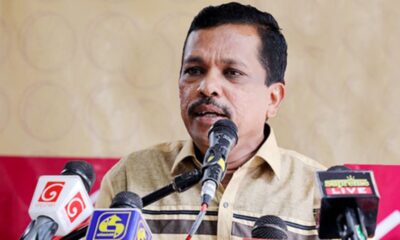

Trade unionist Ranjan Jayalal takes helm as Kaduwela Mayor
-


Sri Lanka must take practical steps to join BRICS – Russian Ambassador
-


Names of Mayors and Chairpersons of several LG bodies gazetted
-
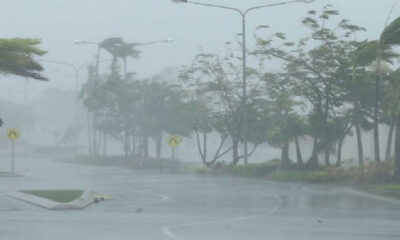

Weather Alert: Showers to ease in Southwest, strong winds forecast in North
-
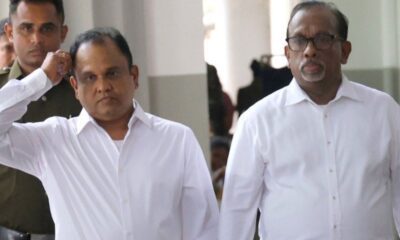

Aluthgamage and Fernando assigned printing work in prison
FEATURES
Inside the fascinating world of India’s blind cave-dwelling fish
Published
2 days agoon
May 30, 2025By
editor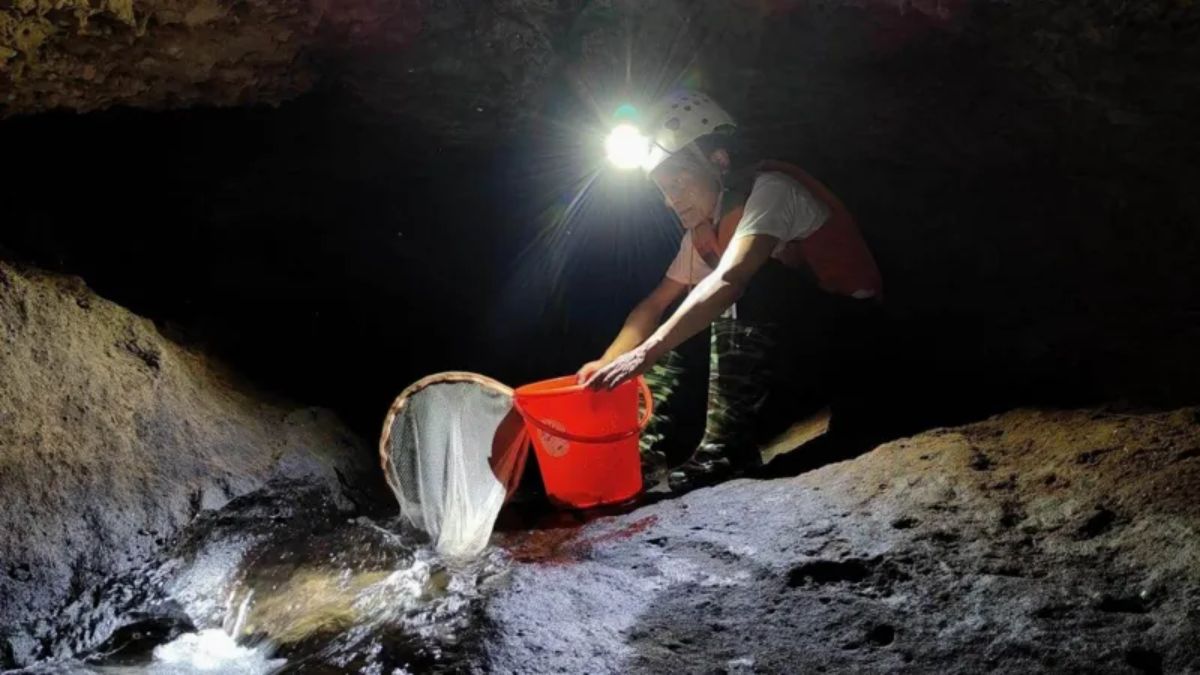
Khlur Baiaineh Mukhim removes a Schistura densiclava specimen from a stream inside Krem Mawjymbuin cave
Two years ago, zoologist Khlur Baiaineh Mukhim spotted something intriguing in a stream in a remote underground cave in India’s north-eastern Meghalaya state.
It was a fish he had never seen before, with long barbels – the whisker-like protrusion around a fish’s mouth – yellowish-green in colour and, most importantly, with eyes.
Cave-dwelling fish, or species of fish that live exclusively in caves, usually don’t have eyes, as they have adapted to living in darkness, which is why the fish Mr Mukhim spotted stood out to him.
Researchers in Meghalaya now say it is a brand new species of fish, one that has adapted to living above as well as under the ground – a unique characteristic among cave-dwelling species.
Their findings were published earlier this month in the latest issue of the Journal of Fish Biology, a leading peer-reviewed publication on fish research.

A Schistura densiclava found in the Krem Mawjymbuin cave
The researchers have named the fish Schistura ‘densiclava’ after the thick black stripe on its tail.
They say that the species is endemic to the cave it was discovered in – Krem Mawjymbuin – in the eastern Khasi Hills, and has been found to exist in both water pools 60m (196ft) deep inside the cave, as well as a nearby stream above ground.
Dandadhar Sarma, a professor of zoology and one of the researchers of the study, says that the environment inside the cave is harsh, where temperatures drop to 18C (64.4F) – the ideal temperature for tropical fish to survive is much higher – and oxygen levels are extremely low.
“So it’s remarkable that the fish can adapt to both – harsh subterranean conditions as well as more favourable surface conditions,” Mr Sarma says.
Schistura densiclava is the sixth cave-dwelling species of fish that has been discovered in Meghalaya over the past two to three decades, but the only one which has been found to show this ability to adapt to two very different kinds of environments.
The state is known to have some of the most complex cave systems in the world but many of its estimated 1,500 to 1,700 limestone and sandstone caves remain unexplored, as they are located in remote, forested regions that are challenging to access.
These cave networks are home to numerous animal species that display fascinating evolutionary characteristics but they remain largely unknown because of insufficient research, Mr Sarma says.
Over the past five years, a team of researchers from the state, funded by the federal government, have been systematically exploring Meghalaya’s vast network of caves to locate and document new species of fish living inside them.
In 2019, the research team discovered Neolissochilus pnar, the largest cave-dwelling fish species in the world, Mr Sarma says.
The fish was found inside the Krem Umladaw cave in the western Jaintia Hills in a deep pond hundreds of metres below the ground.

The entrance of the Krem Umladaw cave
Mr Mukhim, who is part of the team and has undertaken dozens of cave expeditions, says that cave-dwelling fish display evolutionary traits that are as fascinating as the those displayed by animals living at the Earth’s poles or deep inside its oceans.
“Cave ecosystems are one of the harshest environments to live in,” he says.
“These fish usually live in perpetual darkness, stagnant, shallow water pools with dangerously low oxygen levels and sometimes, go for months with little to no food.”
Nature has helped them survive by doing away with the unwanted and strengthening what’s necessary for survival.
Consequently, they’ve lost their eyesight and ability to produce colourful pigments, which would otherwise be a needless waste of energy inside a pitch-dark cave.
Instead, they have a sharper sense of taste and smell, and sensory organs on their skin help them detect vibrations to navigate the substrate and avoid predators.
Their sources of food include only what’s available inside the cave, like leaf debris and marine organisms flushed in by seasonal floods, and even bat excreta.
And within this extremely harsh environment, these cave-dwelling fish species live out their lives, some living up to a decade, and even produce offspring.
Remarkably, their offspring are born with eyesight – a feature that links them to the surface-dwelling ancestors from which they’ve evolved – and gradually, they lose their eyesight as they age.

Neolissochilus pnar, the largest cave-dwelling fish species in the world
But searching for these fish is no easy task.
It involves rappelling down hundreds of meters into cavernous holes in the earth, squeezing through tiny tunnels with little oxygen and wading through pools filled with creatures yet unknown in pitch darkness.
“Our headlights are the only source of light,” Mr Mukhim says.
Catching fish involves squatting near pools for hours, and swiftly sweeping up the skittish creatures in a net as they present themselves.
Mr Mukhim, who has been studying fish found in the caves of Meghalaya for over a decade, says that there’s a need to study these species as that is the only way we will be able to conserve them.
“Once a species is wiped out, you can never bring them back,” Mr Mukhim says.
“It’s painful to think that an entire ecosystem in our midst, one of the most fascinating ones, has been studied so little,” he adds.
“It’s time we paid a little more attention to these cave-dwelling marvels of nature.”
– Cherylann Mollan
(BBC News, Mumbai)
FEATURES
Why the mighty Himalayas are getting harder and harder to see
Published
3 weeks agoon
May 14, 2025By
editor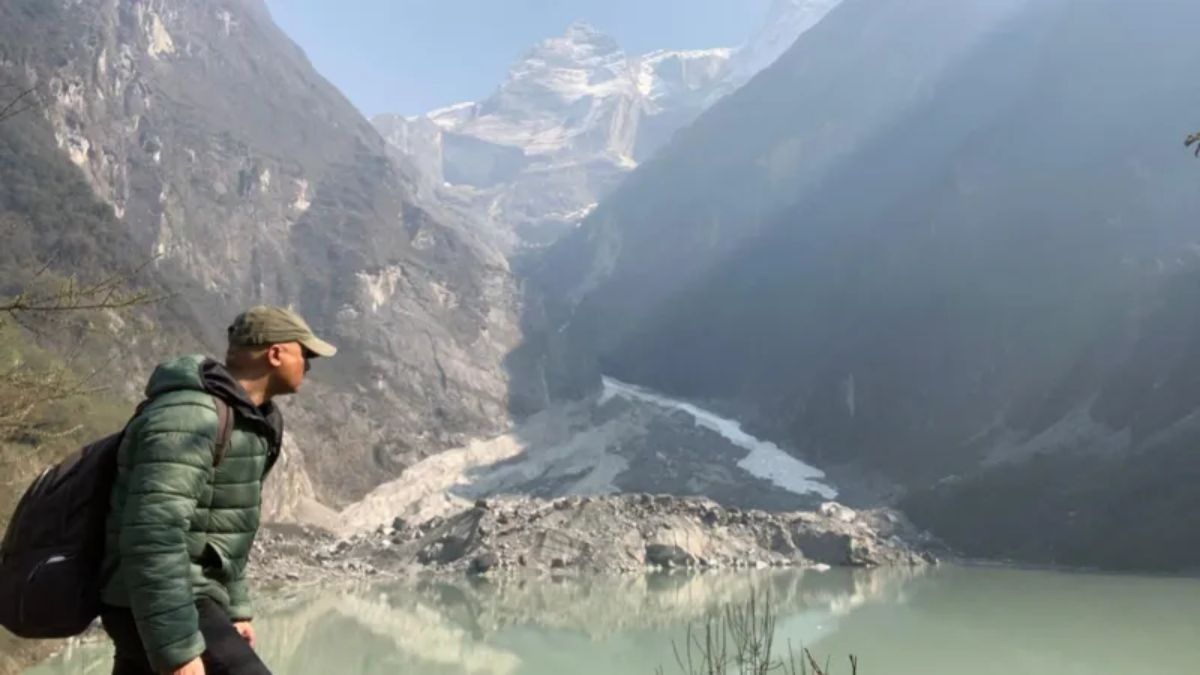
Trekking in Nepal’s Annapurna region, where haze obscures visibility of the epic mountains even at close range
I grew up in Nepal’s capital watching the Himalayas. Ever since I left, I’ve missed sweeping, panoramic views of some of the highest mountain peaks on Earth.
Each time I visit Kathmandu, I hope to catch a glimpse of the dramatic mountain range. But these days, there’s usually no luck.
The main culprit is severe air pollution that hangs as haze above the region.
And it’s happening even during the spring and autumn months, which once offered clear skies.
Just last April, the international flight I was in had to circle in the sky nearly 20 times before landing in Kathmandu, because of the hazy weather impacting visibility at the airport.
The hotel I checked in at was at a reasonable height from which mountains are visible on a clear day – but there was no such day during my two-week stay.
Even from the major vantage point of Nagarkot, just outside Kathmandu, all that could be seen was haze, as if the mountains did not exist.
“I no longer brand the place for views of ‘sunrise, sunset and Himalayas’ as I did in the past,” said Yogendra Shakya, who has been operating a hotel at Nagarkot since 1996.
“Since you can’t have those things mostly now because of the haze, I have rebranded it with history and culture as there are those tourism products as well here.”
During an earlier trip a year ago, I was hopeful I would be able to see the mighty Himalayan peaks on a trek in the mesmerising Annapurna region – but had hardly any luck there either.

View of the Himalayas on an increasingly rare clear day from the Nagarkot vantage point

The hazy view from the same vantage point during my most recent visit
Scientists say hazy conditions in the region are becoming increasingly intense and lasting longer, reducing visibility significantly.
Haze is formed by a combination of pollutants like dust and smoke particles from fires, reducing visibility to less than 5,000m (16,400ft). It remains stagnant in the sky during the dry season – which now lasts longer due to climate change.
June to September is the region’s rainy season, when Monsoon clouds rather than haze keep the mountains covered and visibility low.
Traditionally, March to May and October to November were the best times for business because that was when skies remained clear and visibility was best.
But with rising temperatures and a lack of rain, and worsening air pollution, the spring months are now seeing thick haze with low visibility. Those conditions are beginning as early as December.
‘No sighting means no business’
Lucky Chhetri, a pioneering female trekking guide in Nepal, said hazy conditions had led to a 40% decrease in business.
“In one case last year, we had to compensate a group of trekkers as our guides could not show them the Himalayas due to the hazy conditions,” she added
An Australian tourist who has visited Nepal more than a dozen times since 1986 described not seeing the mountains as a “major let-down”.
“It wasn’t like this 10 years ago but now the haze seems to have taken over and it is extraordinarily disappointing for visitors like me,” said John Carrol.
Krishna Acharya, the provincial chair of the Trekking Agents Association of Nepal in the western Gandaki province, says the trekking industry is in deep trouble.
“Our member trekking operators are getting depressed because no sighting of the Himalayas means no business. Many of them are even considering changing professions,” he told the BBC.

Trekking guide Lucky Chhetri says business is down because of the hazy condition
On the Indian side, near the central Himalayas, hoteliers and tour operators say haze is now denser and returns quicker than before.
“We have long dry spells and then a heavy downpour, unlike in the past. So with infrequent rain the haze persists for much longer,” said Malika Virdi, who heads a community-run tourism business in the state of Uttarakhand.
However, Ms Virdi says tourists are persistent – with many who didn’t catch the mountain range returning to try their luck again.
The western Himalayas in Pakistan have been relatively less affected by the haze because the mountains are relatively far from cities.
But locals say that even the ranges that were once easily visible from places like Peshawar and Gilgit are often no longer seen.
“The sheet of haze remains hanging for a longer period and we don’t see the mountains that we could in the past,” said Asif Shuja, the former head of Pakistan’s environmental protection agency.
Hazes and dust storms increasing
South Asian cities regularly top lists of places with highest levels of air pollution in the world.
Public health across the region has been badly impacted by the toxic air, which frequently causes travel disruption and school closures.
Vehicular and industrial emissions, dust from infrastructure construction and dry gravel roads as well as the open burning of waste are major sources of air pollution year-round.
This is compounded by soot from massive forest fires – which are increasing due to a longer dry season – and the burning of crop residues after the harvest by farmers in northern India, Pakistan and Nepal.
Weather conditions keeping warmer air above cooler air trap these pollutants and limit vertical air movement – preventing pollution from dispersing.
“Hazes and dust storms are increasing in South Asia, and this trend is projected to continue due to climate change and other factors,” Dr Someshwor Das from the South Asia Meteorological Association told the BBC.
In 2024, the number of hazy days recorded at the airport in Pokhara, a major tourism hub in western Nepal, was 168 – up from 23 in 2020 and 84 in 2021, according to Nepal’s department of hydrology and meteorology.

The Fishtail mountain in Nepal on a clear day

The same mountain range covered in haze, taken from roughly the same location
Experts believe the Himalayas are probably the worst affected mountain range in the world given their location in a populous and polluted region.
This could mean the scintillating view of the Himalayas could now largely be limited to photographs, paintings and postcards.
“We are left to do business with guilt when we are unable to show our clients the mountains that they pay us for,” said trekking leader Ms Chhetri.
“And there is nothing we can do about the haze.”
– Navin Singh Khadka
(Environment correspondent, BBC World Service)
FEATURES
Jewels linked to Buddha remains go to auction, sparking ethical debate
Published
4 weeks agoon
May 5, 2025By
editor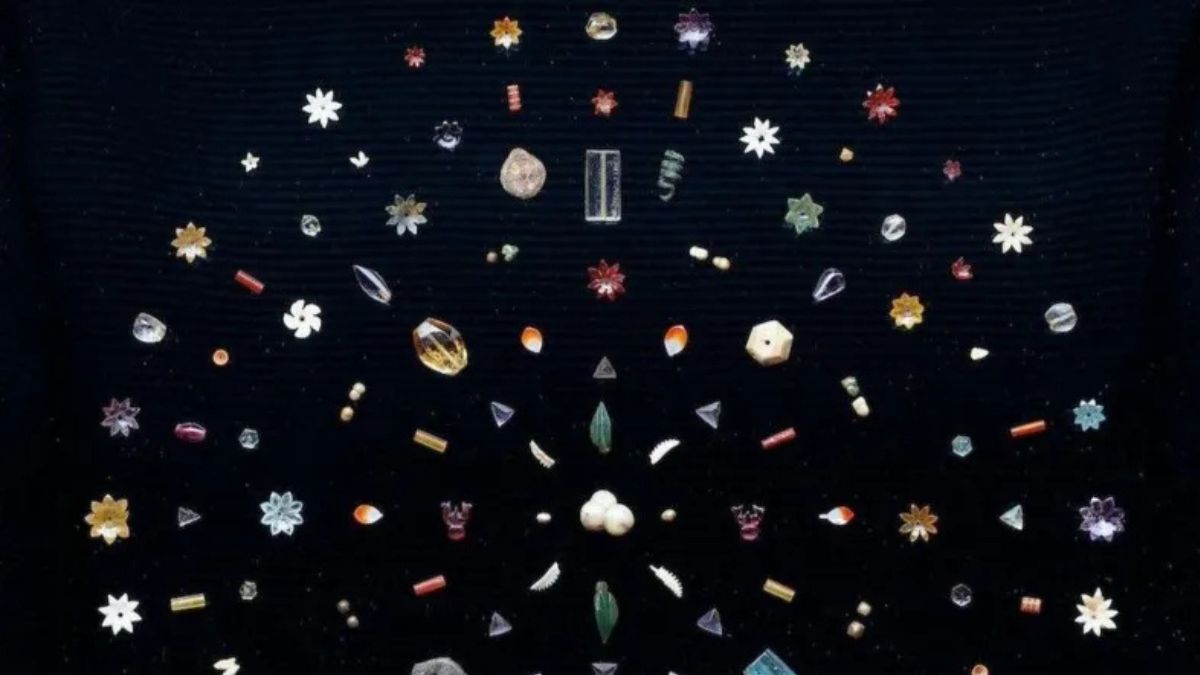
The jewels comprise nearly 1,800 pearls, rubies, sapphires, and patterned gold sheets
On Wednesday, a cache of dazzling jewels linked to the Buddha’s mortal remains, which have been hailed as one of the most astonishing archaeological finds of the modern era, will go under the hammer at Sotheby’s in Hong Kong.
For over a century these relics, unearthed from a dusty mound in northern India in 1898, have sat largely unseen, cradled by a private British collection.
Now, as the gems prepare to leave the custody of their keepers, they are stirring not just collectors’ appetites but also some unease.
They come from a glittering hoard of nearly 1,800 pearls, rubies, topaz, sapphires, and patterned gold sheets, first glimpsed deep inside a brick chamber in present-day Uttar Pradesh in India, near the Buddha’s birthplace.
Their discovery – alongside bone fragments identified by an inscribed urn as belonging to the Buddha himself – reverberated through the world of archaeology. Nicolas Chow, chairman of Sotheby’s Asia and worldwide head of Asian Art, believes this is “among the most extraordinary archaeological discoveries of all time”.
Yet as these relics now face the glare of the auction room, experts tell the BBC that a question hangs heavy: can the sale of treasures so intimately woven into India’s sacred past be considered ethical?

William Claxton Peppé, an English estate manager, excavated the stupa and found the jewels
In 1898, William Claxton Peppé, an English estate manager, excavated a stupa at Piprahwa, just south of Lumbini, where the Buddha is believed to have been born. He uncovered relics inscribed and consecrated nearly 2,000 years ago.
Historians agree these relics, intact until then, are the heritage of both the Buddha’s Sakya clan descendants and Buddhists worldwide. The bone relics have since been distributed to countries such as Thailand, Sri Lanka and Myanmar, where they continue to be venerated.
“Are the relics of the Buddha a commodity that can be treated like a work of art to be sold on the market?” wonders Naman Ahuja, a Delhi-based art historian. “And since they aren’t, how is the seller ethically authorised to auction them?
“Since the seller is termed the ‘custodian’, I would like to ask – custodian on whose behalf? Does custodianship permit them now to sell these relics?”
Chris Peppé, great-grandson of William, told the BBC the family looked into donating the relics, but all options presented problems and an auction seemed the “fairest and most transparent way to transfer these relics to Buddhists”.
Julian King, Sotheby’s international specialist and head of sale, Himalayan Art, New York told the BBC the auction house had made a thorough review of the jewels.
“As is the case with any important items and collectibles that are offered for sale at Sotheby’s, we conducted requisite due diligence, including in relation to authenticity and provenance, legality and other considerations in line with our policies and industry standards for artworks and treasures,” King said.
Ashley Thompson, of Soas University of London, and curator Conan Cheong, both experts in Southeast Asian art, have more questions. In a joint statement they told the BBC: “Other ethical questions raised by the sale are: should human remains be traded? And who gets to decide what are human remains or not? For many Buddhist practitioners around the world, the gems on sale are part and parcel of the bones and ash.”
The sale of the relics has also sparked concern among Buddhist leaders.
“The Buddha teaches us not to take other people’s possessions without permission,” Amal Abeyawardene of London-based British MahaBodhi Society, told the BBC. “Historical records indicate that the Sakyamuni clan were granted custody of these relics, as the Buddha emanated from their community. Their wish was for these relics to be preserved alongside adornments, such as these gems, so that they may be venerated in perpetuity by the Buddha’s followers.”

The jewels were unearthed from this stupa in Piprahwa, northern India in 1898
Chris Peppé has written that the jewels passed from his great-uncle to his cousin, and in 2013 came to him and two other cousins. That’s when he began researching their discovery by his great-grandfather.
The Los Angeles-based television director and film editor wrote he had found 1898 newspaper reports – from Reuters to the New York Tribune – announcing the find of Buddha’s remains.
“The colonisation of India by the British had been a source of some cultural shame for me [and continues to be] but, amidst the treasure hunters who hauled their finds back to England, there had also been people focused on the pursuit of knowledge,” Chris Peppé writes.
He noted his research revealed a lot about his ancestors who he had dismissed as “prejudiced Victorians from a bygone era”.
“I learned that Willie Peppé’s first wife chose to travel around India for her honeymoon and loved the country and its culture. Sadly, she died from an unspecified illness. I learned that my grandmother was outraged at the land laws that applied to Indian women.
“And I learned that the excavation of the stupa was an attempt by Willie Peppé to provide work for his tenant farmers who had fallen victim to the famine of 1897.”

The jewels are considered among the most extraordinary archaeological finds of all time
He writes his great-grandfather’s “technical diagrams of ramps and pulleys suggest that he was also a trained engineer who couldn’t resist a project”.
William Peppé handed the gems, relics and reliquaries to the colonial Indian government: the bone relics went to the Buddhist King of Siam (Rama V). Five relic urns, a stone chest and most other relics were sent to the Indian Museum in Kolkata – then the Imperial Museum of Calcutta.
Only a small “portion of duplicates”, which he was allowed to keep, remained in the Peppé family, he notes. (Sotheby’s notes say Peppé was allowed to keep approximately one-fifth of the discovery.)
Sources told the BBC the auction house considers the “duplicates” to be original items considered surplus to those donated, which the “Indian government permitted Peppé to retain”.
Over the past six years years, the gems have featured in major exhibitions, including one at The Met in 2023. The Peppé family has also launched a website to “share our research”.

Four containers made of steatite (a type of stone) and one made of rock crystal were found inside a sandstone box at the Piprahwa stupa
Some scholars argue Buddha relics should never be treated as market commodities.
“The Sotheby’s auction transforms these highly sacred materials into saleable objects, in continuation of acts of colonial violence which extracted them from a stupa and called them ‘gems’ and ‘objects of interest to Europeans’, creating a false division with the ash and bone fragments they were consecrated with,” say Thompson and Cheong.
Chris Peppé told the BBC that in all the monasteries he had visited “no Buddhists regard these as corporeal relics”.
“A few Buddhist academics at western universities have recently offered a convoluted, fact-defying logic whereby they may be regarded as such. It’s an academic construct that is not shared by Buddhists in general who are familiar with the details of the find,” he said.
Peppé said the family “looked into donation [of the relics] to temples and museums and they all presented different problems on closer scrutiny”.
“An auction seems the fairest and most transparent way to transfer these relics to Buddhists and we are confident that Sotheby’s will achieve that.”
Some also point to The Koh-i-Noor, seized by the British East India Company and now part of the Crown Jewels, with many Indians viewing it as stolen. Should the Buddha’s jewels be next?
“Repatriation, I believe, is seldom necessary,” says Ahuja. “Such rare and sacred relics that are unique and which define a land’s cultural history, however, deserve the government’s exceptional attention.”
– Soutik Biswas
(India correspondent – BBC News)

UN Rights chief türk to visit Sri Lanka this month

Trade unionist Ranjan Jayalal takes helm as Kaduwela Mayor








